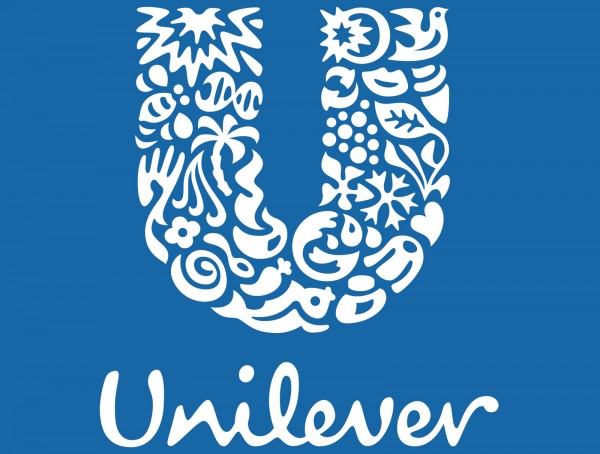
GENERAL ELECTRIC, THE product of an alliance between Thomas Edison, America’s greatest inventor, and J.P. Morgan, its greatest banker, was the technology superstar of the early 20th century. Edison’s patents have long since expired and electricity has become a commodity, but GE remains a commercial empire, the only intact survivor of the companies that made up the original Dow Jones index. GE employs 330,000 people in 180 countries, owns $493 billion-worth of assets and earned $117 billion in 2015. It has survived where other technology stocks have faded because it has fully mastered the art of management. Its slogan, “Imagination at work”, could just as easily be “Management at work”.
Every superstar company is a superstar in its own way. Great companies have distinctive cultures and traditions that are all their own and inhabit well-defined market niches. But they also share a set of common characteristics. The first is an obsession with talent. The only way to remain on top for any length of time is to hire the right people and turn them into loyal corporate warriors. GE spends a billion dollars a year on training. Its success has been such that between 2003 and 2011 about 40 GE vice-presidents have become CEOs of other major companies. Google, which is doing for information what GE once did for electricity, is similarly obsessed with training.
Superstar companies tend to be unashamedly elitist. GE fast-tracks its most promising employees. Hindustan Unilever compiles a list of people who show innate leadership qualities (and refers to them throughout their careers as “listers”). Laszlo Bock, Google’s head of human resources, argues that a top-notch engineer “is worth 300 times more than an average engineer”.
Such companies keep a watchful eye on their high-flyers throughout their careers. Jeff Immelt, GE’s boss, prides himself on his detailed knowledge of the 600 people at the top of his company, including their family circumstances and personal ambitions. Hindustan Unilever’s managers constantly test potential leaders by moving them from one division to another and subjecting them to “stretch assignments”. Procter & Gamble talks about “accelerator experiences” and “crucible roles”.
The second obsession superstar firms share is with investing in their core skills. Corning, the company that made the glass for Edison’s first light bulb, started life producing the raw material for bottles and windows. It now manufactures the glass used in the majority of the world’s electronic devices. Its fibre optics carry information around the world. Its “Gorilla” glass helps prevent your iPhone from shattering when you drop it, and is starting to be used in cars. Next will be huge glass screens that cover entire walls, flexible ones that can be rolled up like scrolls and windows that operate like giant sunglasses for the office. The company’s R&D centre in upstate New York resembles a university campus. Its best scientists have the equivalent of academic tenure (some stay around into their 90s), publishing academic papers and notching up scientific breakthroughs.
The same obsession can be found in all successful tech companies. Amazon sacrificed dividends for years in order to establish its mastery of online shopping. Today it is taking an equally long-term view of the computer cloud by pouring money into servers. Google is putting the riches generated by its search engines into more adventurous technologies. BMW is investing in new materials such as carbon fibre and enhancements such as parking assistance.
Remaining focused on the long term is difficult in a world where public companies are answerable to the stockmarket every quarter, and it turns out that a remarkable number of superstar companies have dominant owners who can resist the pressure for short-term results. According to one study, more than one in ten of tech companies that went to the market between January 2010 and March 2012 had dual voting structures giving their founders extra rights. Both Facebook and Google explicitly justify such structures by the need to pursue long-term projects.
Family companies frequently punch above their weight because their dominant owners are free to think about the long term. Companies in emerging countries typically put more emphasis on long-term growth than on short-term results. The best widely held companies have developed formidable skills at managing the financial markets and making the case for long-term goals.
But investors cannot be expected to be patient for ever; they need a mechanism to tell them when they are pouring money down the drain. Striking the right balance between the long and the short term is the first on a long list of balancing acts that superstar companies have to perform in order to earn their laurels.
All of them set themselves extravagant goals. Coca-Cola does not just want to sell a lot of fizzy drinks, it wants to put a can of Coke within easy reach of everyone on the planet. And when they have achieved those goals, they move the goalposts. Google has expanded its vision from “just” wanting to organise the world’s information to wanting to use that information to reinvent transport, beside a host of other things. Amazon, having become the world’s biggest bookstore, now wants to be the world’s biggest everything store.
At the same time they all pay endless attention to detail. When Steve Jobs was in charge of Apple, he agonised over every tiny detail, down to the exact shade of grey to be used for the signs in its stores’ lavatories. Ingvar Kamprad, the founder of IKEA, a homeware giant, continually toured his stores until well into his 80s (he is now 90). Superstar companies are particularly good at establishing a link between their strategic vision and their everyday operations. Disney, for instance, is utterly committed to projecting wholesomeness.
Great companies combine a strong sense of identity with a fierce hostility to groupthink. Andy Grove, a CEO of Intel, advised CEOs to balance the sycophants they inevitably attract by cultivating “Cassandras” who are “quick to recognise impending change and cry out an early warning”. These Cassandras are often middle managers who “usually know more about upcoming change than the senior management because they spend so much time ‘outdoors’ where the winds of the real world blow in their faces”. GE insists that its high-flying executives, most of whom are engineers by training, take courses in painting in order to “loosen them up” a little.
Such companies also regularly reassess their investment decisions in the light of changing markets. McKinsey measured the agility of more than 1,600 companies by looking at how much of their capital they reallocated every year, and found a strong positive correlation between the companies’ willingness to move their capital around and the total return to shareholders.
How to stay lithe
Superstars do everything they can to remain agile despite their size. They fight a constant war against bureaucratic bloat, unnecessary complexity and overlong meetings. They often locate themselves in the latest tech hotspot in order to absorb its ideas and energy. In 2014 Pfizer opened an R&D facility with 1,000 employees near MIT in Cambridge, Massachusetts. Apple and Intel have set up R&D labs in Carnegie Mellon’s Collaborative Innovation Centre in Pittsburgh. Every car company worth its salt has opened an office in Silicon Valley. They also form close relationships with startups. In 2012 GE launched GE Garages, a lab incubator, to provide startups with access to its experts and to equipment such as 3D printers and laser cutters.
Successful big companies strike a balance between global scale and local roots to become “rooted cosmopolitans”. LG, a South Korean conglomerate, can tailor its products for specific markets: microwave ovens destined for east India, for example, have an autocook option for Bengali fish curry. Kraft has re-engineered the Oreo biscuit for Chinese taste buds, using less sugar and more familiar flavours such as green tea.
Such companies also understand that they need to keep undergoing radical changes in order to survive, as companies such as Google and Facebook have done on several occasions. They are even willing to disrupt their own core businesses before someone else does. Netflix disrupted its video-delivery business by embracing streaming. China’s Tencent disrupted its own social-media business by introducing WeChat, a platform that allows users to book taxis, order food and so on. Again, GE was a trailblazer. In the 1980s and 1990s its then boss, Jack Welch, decreed that it should be among the world’s top three in all the businesses it was involved in, or get out. Now Mr Immelt is restructuring the company for the digital age, selling off GE appliances, buying France’s Alstom, investing heavily in the internet of things and moving the company’s headquarters to Boston to be closer to the heart of high-tech.
Thanks to all these changes, even the classic companies are becoming more asset- and employment-light. In 1962 Exxon, one of the world’s most durable and financially successful corporations, had 150,000 employees; today it has half as many. As for the new breed of tech firms, they typically employ as few people as they possibly can.
But for all their virtues, superstar companies, both old and new, have their dark sides.
Source: The Economist









